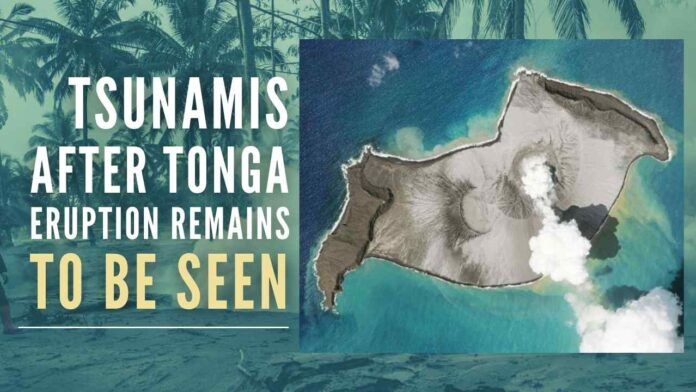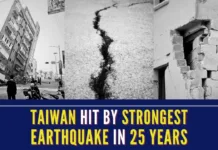
Tsunami threat remains for Australia, Japan Hawaii after underwater volcanic eruption near Tonga
The eruption of the Hunga Tonga-Hunga Ha’apai volcano caused a tsunami to send water flooding into the nation’s capital of Nuku’alofa, while large waves and tidal surges rolled across the Pacific region including the east coast of Australia, Japan, and Hawaii.
After the massive eruption on 15th January, more volcanic upheavals are expected to follow off the coast of Tonga, according to a leading Australian geologist.
The US Geological Survey (USGS) has also said that whether there would be more volcanic blasts or tsunami warnings for the country’s West Coast after the massive January 15 eruption off the coast of Tonga remained to be seen.
Monash University’s Associate Professor of Geochemistry Oliver Nebel is of the opinion that the disaster was caused by the volcano sitting near the edge of one of the Earth’s tectonic plates. He said the January 15 disaster had been caused by the “displacement of water mass through injection of material from the deep Earth’s interior into the ocean and the possible sinking of the volcano due to lava evacuation from underneath.”
Wendy Stovall, a volcanologist with the USGS Volcano Hazards Program (VHP), said that the eruption was incredible and tsunami activity is actually harder to predict after an undersea volcano like this than say an earthquake. “There must have been a very large amount of magma that was exposed, somehow maybe from an underwater landslide or something, that then encountered the seawater and exploded really violently,” she said.
“There is evidence there that volcanism occurred through bodies of water that could send out big, nothing necessarily like what was experienced in Tonga, but could send out big pressure waves and similar stratospheric type of eruptions.”
Stovall said that strong eruptions can sometimes cool the entire earth for a period of years while noting that so far her colleagues studying data from Tonga have not calculated any numbers to suggest that that is the case here.
Nebel said, “The last eruption of this volcano was about 1,000 years ago, so it was due for a large eruption, and this is likely what happened now. Hot magma was constantly accumulating within volcanoes, and it is expected that they will create lots of ash and can have “a fair bit of a violent eruption“.
Volcanoes build up those underground reservoirs and every now and then this reservoir is emptied, and this causes an eruption Nebel added, “Once the magma is evacuated from underneath the volcano, it’s likely that eruptions will go on and on. But once you have a violent eruption it’s unlikely the next ones will be as disruptive because there’s a good chance that a huge amount of the magma has already erupted.”
“At the moment, we actually do not have a lot of data. Most of the stations on the volcano would have been destroyed during the day. We have satellite data, but any sort of other measurement needs to be taken on-site, which at the moment is not easy, basically impossible to travel there. Without data, it’s really difficult to assess what sort of explosivity index can be assigned to the volcano or how much mess was in place,” He said.
Restoring Tonga’s undersea communications cable that was severed during the eruption is a tough task. The repairs could take more time, which means the inhabitants of the island country are essentially cut off from communication with the outside world.
The volcanic activity off the Tongan coast had been detected over the Christmas period which was a sign that pressure was building up along the vulnerable plate edges.
[With Inputs from IANS]
PGurus is now on Telegram. Click here to join our channel and stay updated with all the latest news and views
For all the latest updates, download PGurus App.
- Ahead of third phase, PM Modi writes to BJP candidates; urges to spotlight Congress’ politics of ‘division and appeasement’ - April 30, 2024
- AstraZeneca admits its COVID vaccine can cause side effect called TTS in rare cases - April 30, 2024
- ‘Unwarranted & unsubstantiated imputations on serious matter’: MEA on US media report on Pannun case - April 30, 2024










